When the air gets that chill and the leaves start to change, that means one thing: it’s pumpkin spice season again. But does that hold true, too, for your horse? While we tend to think of our equine friends chowing down on some apples, carrots, etc. it makes sense to wonder if we share an affinity for pumpkin, too. And can horses even safely eat pumpkin?
Can horses eat pumpkin? Horses can, do and enjoy eating pumpkin. The flesh and seeds are perfectly safe, as is that canned stuff you can buy in stores and bake into treats.
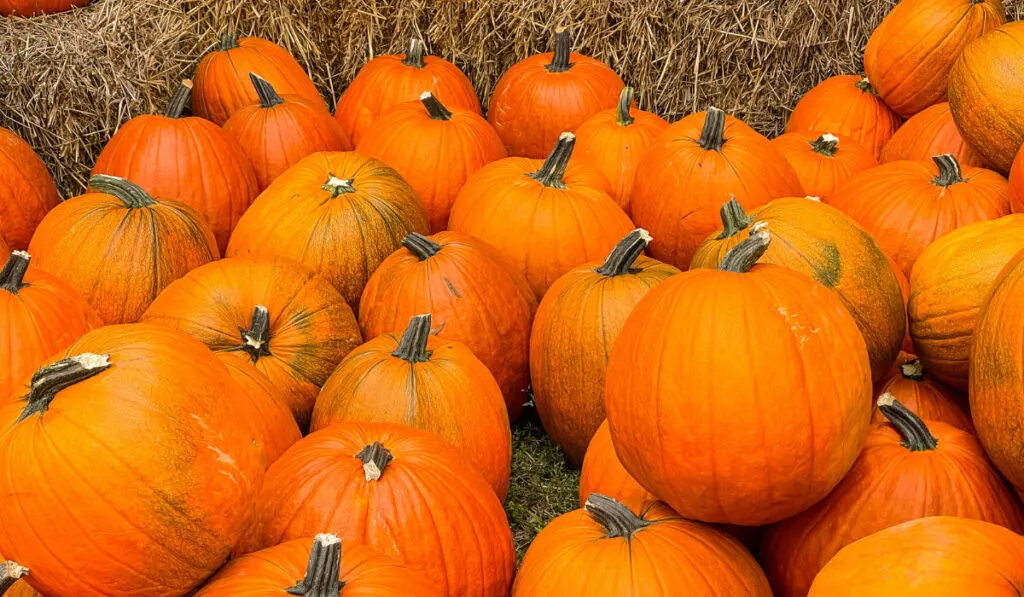
There are parts of the pumpkin, though, that should be avoided and so it’s not recommended to just toss a whole gourd into a stall or paddock for them to eat away at.
Table of Contents
Nutrition
We know pumpkin is typically safe to eat, but is it healthy, too? Or at least not terribly bad for a horse’s diet? The overall answer is a safely generalized “yes, pumpkin is rather healthy.” (source)
Pumpkin is not terribly high in sugars and is definitely low in fats. Further, it has a decent amount of potassium, at .4 grams per cup.
While that is higher in a human context, it poses little to no disruption to a horse’s daily intake, as hay typically yields 8.5 grams per cup. Horses are potassium-eating machines.
Diving further into the health pool, pumpkin has a relatively safe glycemic index (carbohydrate composition causing blood glucose to rise) at 75, which puts its ability to increase blood sugar on the relatively low side of things, especially as it tends to be eaten only in small doses and not very often. SO even if a horse has a metabolic disorder or high blood sugar and is on a restricted diet, pumpkin is still pretty safe to give to them.
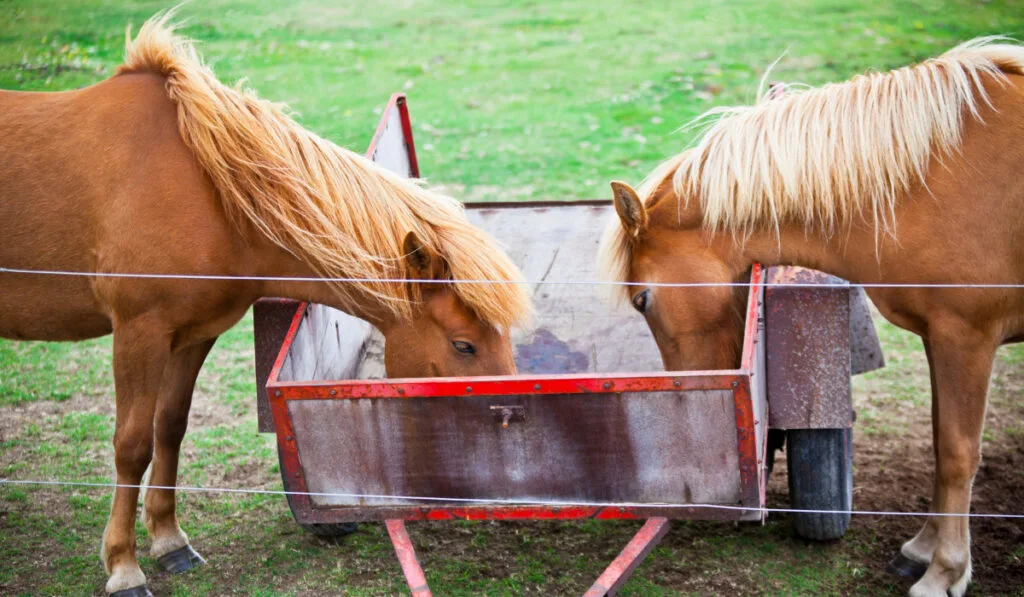
Further, pumpkins (the flesh and the seeds alike) contain a number of beneficial vitamins and properties, many of which you can find marketed in dietary supplements, such as:
- Carotenes: Helps with developing eyes/vision and strong bones
- Fatty acids: These are necessary components that are excellent for heart health
- Fiber: Well known to help aid in digestion
- Minerals: Calcium, copper, phosphorus and potassium, all of which are part of a body’s essential nutrients for healthy functioning
- Vitamin A: Also good for eyes, bones, cell division and reproduction
- Vitamin E: A necessary vitamin for building muscle and regulating growth of red blood cells
- Vitamin B3: Produces energy for the body and the cells
- Vitamin B9: Necessary for DNA and as an important component in other genetic materials
Also important to remember is that only the orange, traditional pumpkins are safe for horses to eat. Other autumn gourds (green, yellow, white, striped, bumpy, smooth, etc.) are considered potentially toxic to horses and can lead to colic, diarrhea and gastrointestinal irritation.
Pumpkin Flesh
The actual pumpkin itself is a happy, healthy treat for horses. Being 90% water, it is low in sugars and anything harmful to a horse’s diet. (source)
Snacking on pumpkin flesh keeps a horse occupied without adding any harmful fats, carbs or chemicals to their diet. And, despite that relatively low sugar content, they have a pleasingly sweet flavor that horses love.
Rather than giving a horse a whole pumpkin, though, consider slicing it up into chunks or halves to make it easier to eat.
Plus you will want to make sure the stem is removed to reduce the risk of injury (scratching or stabbing themselves) and ingestion (unlike the flesh, rind and seeds, the stem of a pumpkin can pose safety concerns to a horse’s teeth, tongue, throat and digestive system and so should be avoided if possible.)
Remove the stem from a pumpkin before feeding it to a horse.
Pumpkin Rind
The good news about feeding your horse pumpkin flesh is that you do not have to worry about skinning or peeling it. In addition to simply being safe to eat, horses seem to enjoy eating it, so there is no cause for concern about them being picky peel eaters. (source)
Pumpkin Seeds
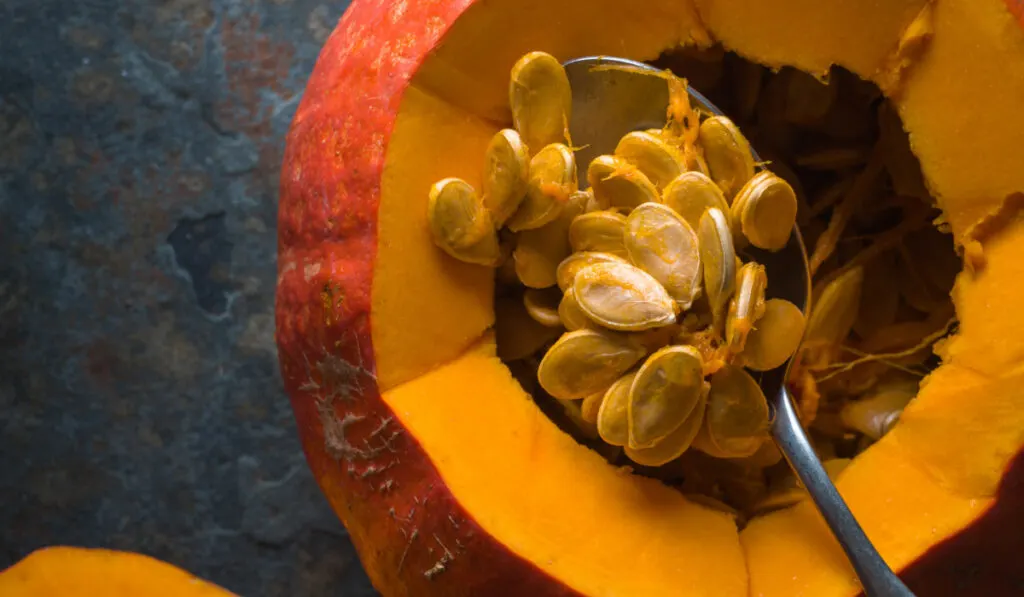
What is a delicious snack for humans also can be for horses! (although, maybe skip the extra salt, seasonings or coatings.)
Pumpkin seeds are talked about widely for their health benefits, and, though most of the research is centered around humans, they are believed to have a positive impact on nitric oxide, a cellular signaling compound, levels.
The seeds have also been shown to contain anti-parasitic properties with a potentially positive effect for horses who have worm loads resistant to commonly available worming pastes. (source)
The seeds are also known to be excellent sources of vitamins, minerals, proteins, and fibers that are helpful to healthy digestion. Horses can – and will – happily eat them raw and fresh, but if you are feeling fancy, you can roast up some as a very special treat for your pony.
Feeding Ideas
Since it is already known that the flesh of the pumpkin is good to eat, that means you can incorporate pumpkin into horsie snacks! Considering adding some pumpkin puree or mashed pumpkin to homemade, horse-safe cookies or muffins.
In fact, just some oats, molasses, sugar and pumpkin baked together can make for an easy and yummy horse treat. (source)
You can even use canned pumpkin from a grocery store, although you will want to check out the ingredients to make sure it’s pretty much pure pumpkin, with no added sugars, spices or anything else that may upset their stomachs.
Frequency
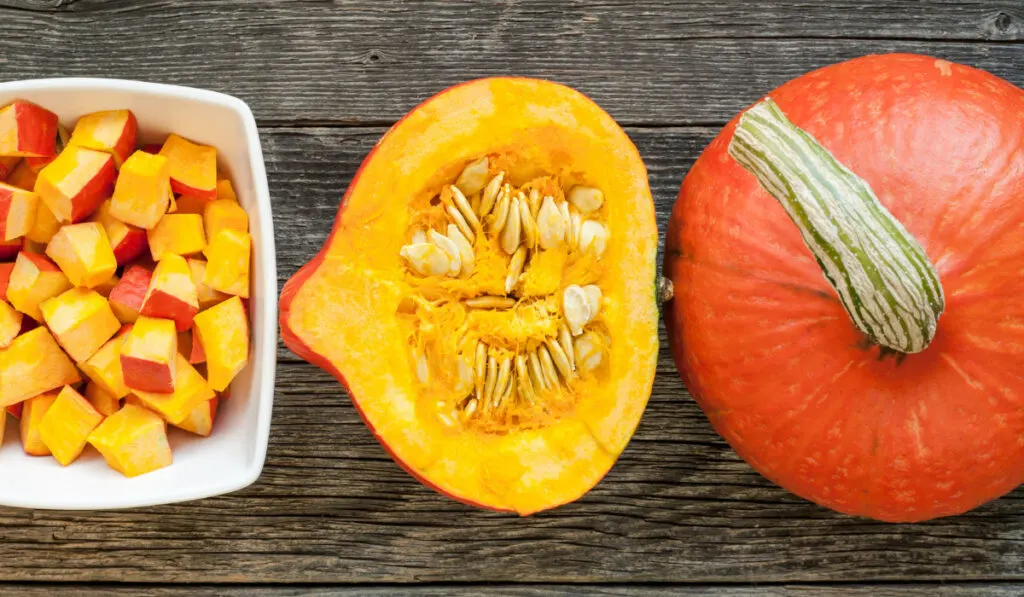
Again, while pumpkin is a pretty safe treat to give your horse, it should be remembered that it is an addition and a treat.
Just like with anything else (peppermints, cookies, fruit, etc.) pumpkin should not replace any part of their diet and should not be given on a daily basis.
Too much of something new or too big of a disruption to normal eating can easily upset a horse’s very delicate digestive system.
If you are only feeding your horse pumpkin in small quantities, you do not run the risk of accidentally upsetting their digestion. It’s recommended you stick to only a few cups a day – and not every day for a long period of time, either. Plus, pumpkin is harder to come by outside of the fall season and your horse may grow to miss their usual carrots or apples!
Feeding
As mentioned, the traditional orange pumpkins are completely safe for horses. Before you let them have some, though, make sure you are properly selecting and preparing the gourd.
Check Condition
It is very important to check the pumpkin condition before feeding it to your horse, as there are important times to avoid it.
If the pumpkin shows any signs of mold, rotting, mildew (these are especially prevalent at times around the parts that were in contact with the ground) do not feed it to your horse.
This pumpkin could make your horse sick, not to mention the fact it will have an off flavor and texture. If the only iffy signs on the pumpkin are some sagginess or softness, it is safe to simply cut those parts away. You can feed the remaining firm, appetizing parts of the pumpkin to your horse.
Don’t Use Decorated Pumpkins
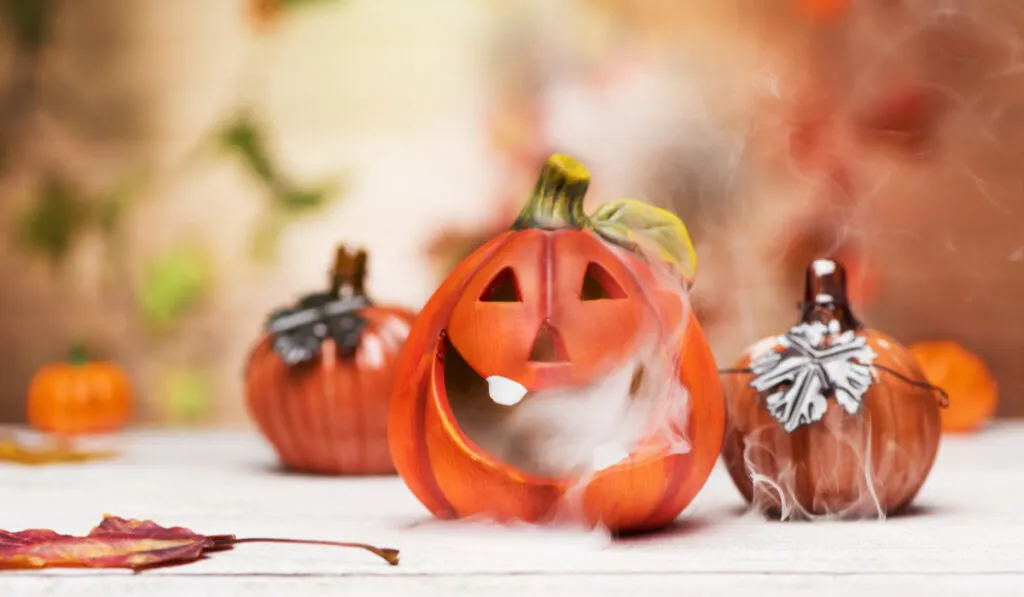
You should also be wary of pumpkins that were previously used as a decoration. Aside from the likelihood that they have been sitting longer and may have started to go bad, they also may contain traces of paint, candle wax, glitter, glue, etc. and are unsafe to feed to horses.
Preparation
The most recommended way to go about feeding pumpkin to your horse is to cut it up into smaller pieces or chunks so as to avoid choking hazards (and ensure the stem is gone, as touched on before.)
Pumpkin pieces are delicious to horses on their own but can also be mixed in with other safe fruits and vegetables (such as carrots or apples) for a healthy snack medley!
Recipe
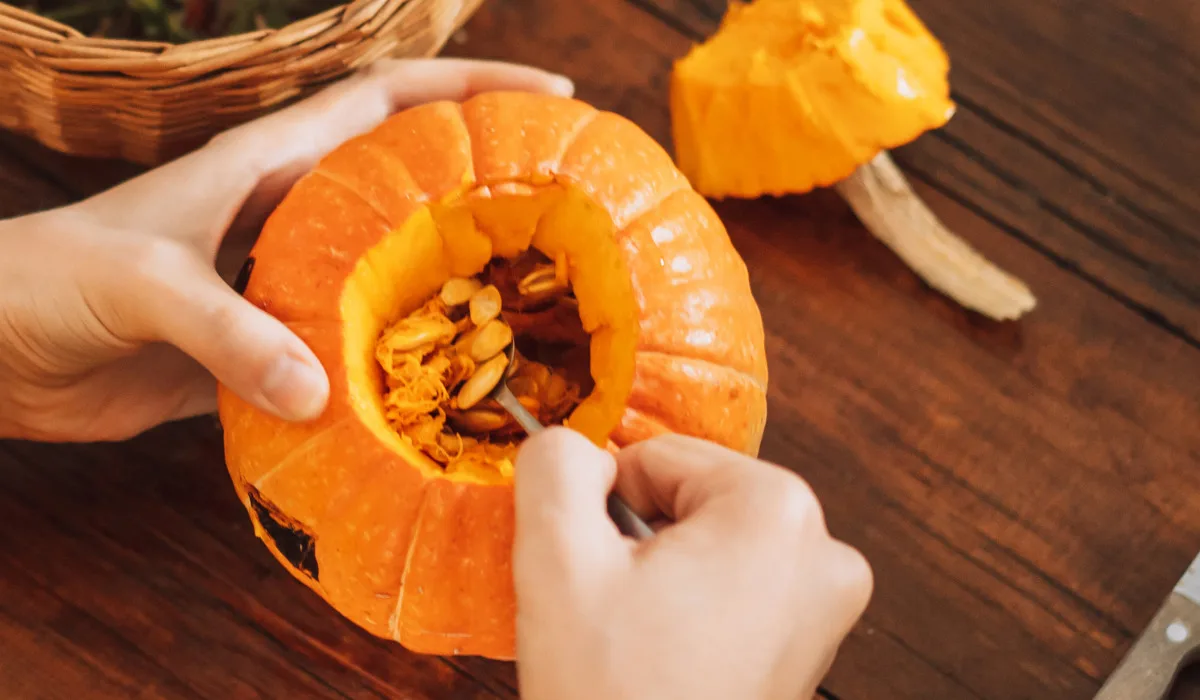
Halloween Horse Mash
This pumpkin based horse bran mash is sure to be a hit for all of the equines in your stable. Remember that you should introduce new foods, including pumpkin, slowly to your herd to avoid stomach upset and colic. Start with a smaller pumpkin or allow your horses to share a whole one.
Ingredients
- 1 small pumpkin
- 1 small apple
- 1 carrot
- Wheat Bran
Instructions
- Cut top off of pumpkin and discard.
- Remove seeds and set aside (horses can eat these too)
- Fill pumpkin 3/4 full with wheat bran.
- Add water to desired consistency.
- Mix sliced carrots and apples into bran.
- Serve to horse.
Notes
As an alternative to using the pumpkin as a bowl, you can always also cut it up into cubes and mix it into a bucket with the bran and other ingredients. You could add any horse safe fruit or vegetable to the mix.

